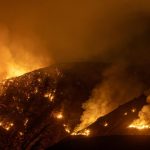You’ll find Kevlar fabric blankets incredibly useful for emergency kits because they’re fire-proof and offer excellent insulation. Their strong, lightweight fibers resist flames and high heat—up to 800°F—without melting or tearing. Plus, they trap body heat effectively, keeping you warm in harsh conditions. These blankets are tough enough for firefighting and outdoor survival, providing reliable protection and warmth. If you want to understand their full benefits and proper use, keep exploring the details ahead.
Table of Contents
Key Takeaways
- Kevlar fabric blankets resist flames and heat up to 800°F, providing superior fireproof protection in emergency situations.
- Their tightly woven structure offers excellent thermal insulation, retaining body heat during cold or hazardous conditions.
- Lightweight and durable, Kevlar blankets are easy to carry and ideal for inclusion in emergency preparedness kits.
- They protect against sparks, abrasion, and moisture, making them reliable for outdoor and industrial fire hazards.
- Proper care involves gentle hand washing, air drying, and storage in a dry, cool place to maintain fireproof integrity.
Understanding the Unique Properties of Kevlar Fabric
Kevlar fabric stands out because of its exceptional strength and durability. When you handle it, you’ll notice its lightweight yet incredibly tough nature, much stronger than steel on a weight-for-weight basis.
This strength comes from its tightly woven molecular structure, which resists stretching and tearing. You’ll also find Kevlar highly flexible, allowing it to conform to shapes without breaking.
Unlike many other fabrics, Kevlar resists abrasion and impact, making it ideal for protective gear. Plus, it doesn’t degrade easily over time, so you can rely on it for long-term use.
Knowing these unique properties helps you appreciate why Kevlar fabric is trusted for vital applications, including protective clothing and emergency blankets, where safety and reliability are essential.
How Kevlar Blankets Provide Fire Resistance
You’ll find that Kevlar blankets resist heat by blocking flames and slowing down temperature rise.
Their flame retardant properties prevent ignition, while the material’s thermal insulation keeps heat from passing through.
Let’s explore how these features work together to provide effective fire resistance.
Heat Resistance Mechanism
Although many materials struggle under extreme heat, this fabric blanket stands out by effectively resisting fire.
When you expose Kevlar to high temperatures, its unique molecular structure kicks in. The long, tightly bonded polymer chains don’t easily break down, so the fabric maintains its integrity instead of melting or igniting.
You’ll also notice that Kevlar’s high thermal stability means it can absorb and disperse heat quickly, preventing it from transferring to whatever it’s protecting. This heat dissipation slows down the temperature rise on the surface, giving you essential extra seconds in emergencies.
Plus, Kevlar doesn’t shrink or deform under heat, so it keeps its protective shape. When you rely on this blanket, you’re counting on these built-in heat-resistant mechanisms to keep you safe.
Flame Retardant Properties
When fire threatens, this fabric blanket acts as a reliable barrier by incorporating flame retardant properties that prevent flames from spreading.
Kevlar fibers don’t easily ignite or melt, so you get a protective shield that resists combustion. When exposed to flames, Kevlar chars instead of burning, which helps slow down the fire’s progress. This charring creates a carbonized layer that serves as an extra barrier against heat and flames.
You won’t find the blanket producing toxic smoke or dripping molten material, making it safer to use in emergencies.
Thanks to these flame retardant qualities, you can trust Kevlar blankets to provide dependable fire resistance, giving you essential extra time to respond or escape when faced with fire hazards.
Thermal Insulation Benefits
Since heat poses one of the greatest dangers during a fire, Kevlar blankets provide essential thermal insulation that helps protect you from intense temperatures. Their tightly woven fibers resist heat transfer, creating a barrier that slows down the spread of thermal energy. This keeps you safer by reducing burns and heat exposure. You can rely on Kevlar blankets to shield you during emergencies, whether escaping a fire or protecting your gear.
| Feature | Benefit | Effect |
|---|---|---|
| High heat resistance | Blocks thermal energy | Keeps you cooler longer |
| Dense fiber weave | Limits heat conduction | Reduces burn risk |
| Lightweight design | Easy to carry | Quick access in emergencies |
Thermal Insulation Benefits of Kevlar Blankets
Because Kevlar fibers resist heat exceptionally well, Kevlar fabric blankets provide outstanding thermal insulation for a variety of applications. When you use one, you benefit from its ability to trap and retain body heat, keeping you warm in cold environments.
The blanket’s heat resistance also means it won’t easily degrade or lose insulating properties near flames or sparks, making it ideal for emergencies involving fire. Plus, its lightweight nature guarantees you can carry it without extra bulk.
Here’s why Kevlar blankets excel in thermal insulation:
- They reflect radiant heat, reducing heat loss.
- Their dense weave limits air flow, enhancing warmth retention.
- They maintain insulation even when exposed to high temperatures, guaranteeing reliable protection.
Comparing Kevlar Blankets to Traditional Emergency Blankets
When you compare Kevlar blankets to traditional emergency blankets, you’ll notice Kevlar offers superior heat resistance that can handle higher temperatures.
You’ll also find Kevlar blankets are far more durable and reusable, making them a smarter long-term investment.
Understanding these differences helps you choose the right blanket for your emergency needs.
Heat Resistance Comparison
Although traditional emergency blankets offer some protection against heat, Kevlar fabric blankets outperform them markedly in heat resistance. When you face extreme temperatures, Kevlar’s unique fibers can withstand heat up to 800°F (427°C), far surpassing the typical emergency blanket’s melting point around 250°F (121°C). This means Kevlar blankets protect you better in fire-related emergencies.
Here’s why Kevlar stands out:
- Higher heat tolerance: Kevlar resists intense heat without melting or catching fire.
- Better insulation: It maintains warmth without transferring heat quickly, unlike thinner foil blankets.
- Enhanced safety: Kevlar’s fire-resistant properties reduce risk of burns during exposure.
Choosing Kevlar blankets guarantees stronger, longer-lasting heat protection in critical situations, keeping you safer when it matters most.
Durability and Reusability
While traditional emergency blankets serve their purpose in a single use, Kevlar fabric blankets offer superior durability and reusability that you can count on over time.
Unlike the thin, disposable materials of standard blankets, Kevlar withstands wear and tear, resisting rips, tears, and abrasions even in harsh conditions.
You can fold, pack, and deploy a Kevlar blanket repeatedly without worrying about damage. This means less waste and more reliability for your emergency kit.
When you need a dependable source of warmth and protection, Kevlar won’t let you down.
Investing in a Kevlar blanket means you’re prepared for multiple emergencies, making it a smarter, more sustainable choice than traditional single-use blankets.
Ideal Scenarios for Using a Kevlar Fabric Blanket
Because Kevlar fabric blankets offer exceptional heat resistance and durability, you’ll find them invaluable in situations involving high temperatures or fire hazards.
You can rely on these blankets to shield yourself or equipment from flames, sparks, and intense heat. They’re perfect for protecting skin during emergency fire escapes or covering flammable materials to prevent ignition.
Consider using a Kevlar fabric blanket in these scenarios:
- Emergency fire response: Shield yourself or others during a fire escape or rescue.
- Camping and outdoor cooking: Safeguard tents and gear from campfire sparks.
- Industrial environments: Protect workers near welding or cutting operations.
Durability and Longevity of Kevlar Blankets in Harsh Conditions
When you face extreme environments, Kevlar blankets stand up to the challenge by maintaining their strength and protective qualities over time.
You’ll find they resist tearing, abrasion, and chemical exposure far better than traditional fabrics. Even after repeated use in harsh conditions, these blankets won’t degrade or lose their fire-resistant properties.
They handle moisture and UV rays without significant weakening, so you can rely on them outdoors or in emergency situations. Their lightweight yet robust fibers guarantee the blanket stays intact, providing consistent insulation and protection when you need it most.
Incorporating Kevlar Blankets Into Your Emergency Preparedness Kit
The durability and resilience of Kevlar blankets make them a valuable asset in any emergency preparedness kit. You’ll want to include one because it offers fire resistance, insulation, and protection from harsh elements.
When packing your kit, consider these key points:
- Choose a compact, lightweight Kevlar blanket for easy storage and portability.
- Store it in a waterproof bag to keep it dry and ready for use.
- Familiarize yourself with its uses, like shielding from flames or creating a thermal barrier.
Care and Maintenance Tips for Kevlar Fabric Blankets
Although Kevlar fabric blankets are tough and built to last, you should still care for them properly to maintain their protective qualities.
Avoid washing them in hot water or using bleach, as harsh chemicals can weaken the fibers. Instead, gently hand wash with mild soap and cold water if necessary, then air dry away from direct sunlight.
Store your Kevlar blanket folded in a dry, cool place to prevent moisture buildup and mildew. Inspect it regularly for any tears, burns, or damage, and replace it if its integrity is compromised.
Don’t expose the blanket to oils, solvents, or sharp objects that could degrade its performance.
Real-Life Stories: Kevlar Blankets in Action During Emergencies
You’ve probably heard how Kevlar blankets have saved lives in intense fire rescues, shielding people from flames and heat.
In survival situations, they’ve proven to be reliable gear when every second counts.
Let’s explore some real stories where these blankets made all the difference.
Fire Rescue Success Stories
When firefighters face intense flames, Kevlar fabric blankets often become their lifesaving shield. You’ll find these blankets protecting victims and first responders alike, thanks to their fire-retardant strength and heat resistance.
Imagine being trapped in a burning room; a Kevlar blanket can shield you from severe burns while rescue teams work fast to get you out safely.
Here are some fire rescue success highlights:
- A firefighter used a Kevlar blanket to shield a child from flames, preventing serious injury.
- Emergency crews wrapped a trapped worker in Kevlar fabric, reducing burn risks during extraction.
- Kevlar blankets helped contain a fire’s spread while rescuers evacuated residents quickly and safely.
These real-life cases prove Kevlar blankets are essential in fire emergencies.
Survival Situations Utilizing Kevlar
Firefighters aren’t the only ones who rely on Kevlar fabric blankets in emergencies. You might find yourself wrapped in one during a camping mishap or a sudden fire. Kevlar blankets resist flames and insulate against cold, making them a lifesaver when seconds count. Here are real-life scenarios where Kevlar blankets proved invaluable:
| Situation | Kevlar Blanket Benefit |
|---|---|
| Wildfire Evacuation | Fire resistance for protection |
| Car Accident | Insulation from cold shock |
| Hiking Incident | Shield from unexpected flames |
| Home Fire | Quick barrier against heat |
| Natural Disaster | Durable, reusable warmth source |
Where to Purchase Quality Kevlar Fabric Blankets
Where can you find quality Kevlar fabric blankets that offer reliable protection and durability?
Start by checking specialized outdoor and survival gear stores—they often stock high-grade Kevlar blankets designed for emergency use.
Online marketplaces also provide a wide selection, but be sure to verify sellers’ reputations and product certifications.
Additionally, industrial safety suppliers cater to professionals and can offer top-tier Kevlar blankets built to meet strict safety standards.
Consider these sources when shopping:
- Outdoor and survival gear retailers with expert staff
- Verified sellers on reputable online platforms
- Industrial safety equipment suppliers with certified products
Frequently Asked Questions
Can Kevlar Blankets Be Customized With Logos or Colors?
You can customize Kevlar blankets with logos or colors, but options depend on the manufacturer. Reach out to suppliers to discuss your design needs and confirm if they offer personalization services for these specialized blankets.
Are Kevlar Blankets Environmentally Friendly or Recyclable?
You’ll find Kevlar blankets aren’t easily recyclable due to their synthetic fibers, and their production uses energy-intensive processes. However, their durability means you won’t replace them often, reducing overall environmental impact.
What Is the Weight Comparison Between Kevlar and Wool Blankets?
Think of Kevlar as a featherlight shield compared to wool’s cozy heft. You’ll find Kevlar blankets considerably lighter, making them easier to carry, while wool blankets weigh more due to their dense, natural fibers and warmth.
Do Kevlar Blankets Cause Skin Irritation or Allergic Reactions?
You usually won’t experience skin irritation or allergic reactions from kevlar blankets since they’re made from synthetic fibers designed to be safe. However, if you have sensitive skin, it’s smart to test a small area first.
Can Kevlar Blankets Be Used for Outdoor Camping Beyond Emergencies?
You might worry Kevlar feels rough, but it’s actually comfortable and durable. You can definitely use Kevlar blankets for outdoor camping—they offer excellent insulation and fire resistance, keeping you safe and cozy beyond emergencies.
- Tetron Fabric for Marine Applications: Durability and Use Cases - June 18, 2025
- Tetron Fabric for Outdoor Furniture: Weather Resistance and Care - June 18, 2025
- Tetron Fabric for Wall Coverings: Style and Application Tips - June 18, 2025







